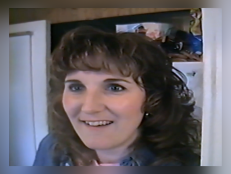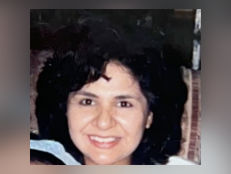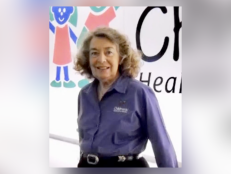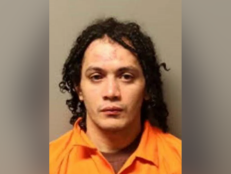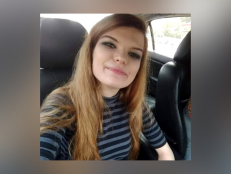Florida Woman Mysteriously Died The Night She Broke Up With Her Sheriff’s Deputy Boyfriend
Officials ruled Michelle O’Connell’s death a suicide, but loved ones question if she may have been murdered.

Warner Bros. Discovery, Inc. (Screenshot from ID's "Crime Scene Confidential")
Did a young mother in Florida die by suicide, or are those advancing the theory she was murdered correct? The troubling question has hung over the case of Michelle O’Connell for well over a decade.
On Sept. 2, 2010, Jeremy Banks, a deputy with the St. Johns County Sheriff’s Office, called 911. “Please get someone to my house” in St. Augustine, he told an emergency dispatcher, according to the recording. “Please, it’s my girlfriend, I think she just shot herself. There’s blood everywhere, please!”
Banks’ colleagues at the St. Johns County Sheriff’s Office responded to his home, where they found the deputy crouched by a bedroom door. Nearby lie his 24-year-old girlfriend, Michelle O’Connell, suffering a gunshot wound to the inside of her mouth.
A deputy later wrote in a police report that while escorting Banks from the home, he was “combative” and had “alcohol on his breath.” The report also notes Banks “was upset and screaming.”
A gun, which turned out to be Banks’ duty weapon, had its tactical light turned on and was next to O’Connell, who still had a pulse when paramedics arrived.
Despite first responders’ efforts, O’Connell, the mother of a then-4-year-old girl, Alexis, was pronounced dead at the scene after 20 minutes. It was later determined a bullet passed from her mouth and through her neck before severing her spinal cord.
At the scene, recordings show, deputies speculated O’Connell’s death was the result of suicide. Normal protocol would have called for Banks to immediately be removed from the scene, photographed and have his clothing and phone collected. The investigation shows that didn’t happen in this case.
Two hours after the incident, Banks’ colleague, St. Johns County Detective Jessica Hines, questioned Banks outside his house about his girlfriend’s death and the events that led up to it.
According to a recording, Blank claimed he was sitting on his motorcycle in his garage when he heard a “pop” and rushed inside screaming O’Connell’s name. Banks said he discovered the bedroom door locked and kicked it in “and found [Michelle] laying where she is.”
Loved ones say they believe deputies were too quick to determine what may have happened to O’Connell. According to O’Connell’s mother, Patty, sheriff’s deputies notified her about her daughter’s death around 11:30 p.m. the night of the shooting and said she “committed suicide.”
On Sept. 4, 2010, two days after the incident, the medical examiner ruled O’Connell’s death a suicide. The examiner observed that O’Connell had no defense wounds and wrote in the autopsy report there was “no indication that the subject might have been recently battered.”
Patty alleged her daughter and Banks had a tumultuous relationship. Still, she recalls initially approving of Banks when he and O’Connell first started dating. “I was happy, because, I said, he’s a policeman, he’ll protect her. She’ll have a good life. But little did I know it was gonna turn sour.”
O’Connell’s friend, Ciara Morris, says before O’Connell died, she was in the process of “taking control of her life” by getting promoted at work and looking for an apartment. “She was going to build a life for her and Lexi without having to rely on anyone else,” Morris explains. “There’s no part of me that thinks that she would take her own life and leave Lexi without a mom.”
The night of the deadly incident, O’Connell and Banks attended a Paramore concert together. Banks later told investigators that he and his girlfriend were arguing throughout the evening. Patty says the reason is because her daughter already knew that day she was going to break up with Banks.
During the concert, O’Connell sent a text to her sister, Chrissy, who was babysitting O’Connell’s daughter.
According to phone records, O’Connell wrote: “Promise me one thing. Lexi will be happy and always have a good life.”
Chrissy responded to her sister, asking via text, “What’s going on im scared.”
When the concert ended, O’Connell reportedly texted Chrissy again, writing she would be to her sister’s home “soon.” She never arrived and was later found dead inside Banks’ house.
Banks was placed on administrative leave following his girlfriend’s death, and he underwent further questioning at the sheriff’s office. In an interview, Banks said O’Connell got into a fight with him around a month before the concert and claimed she told him that “sometimes you make me want to kill myself.”
The sheriff’s office declined to charge Banks with any crimes.
With time, O’Connell’s family grew more and more frustrated and felt they weren’t getting answers to their questions about the case. In 2011, one year after the shooting, the Florida Department of Law Enforcement conducted an independent investigation at the sheriff’s office’s request for outside review.
All evidence in the case was retested, and neither Banks’ DNA nor fingerprints were found on the gun used in the shooting. One friend of O’Connell’s observes it was an “unusual discovery,” especially, she says, if Banks had used his duty gun for work the day of the shooting.
Further muddying the waters, a crime scene reconstructionist also looked at the case and fired the gun multiple times at multiple angles. The expert then suggested O’Connell’s death could have been the result of foul play.
The findings prompted Florida’s governor to call for a third investigation to determine if O’Connell was murdered, or if she killed herself.
After the third three-month investigation, which concluded in March 2012, the Florida state attorney concluded there was not enough evidence to open a murder investigation. As a result, O’Connell’s manner of death officially remained a suicide, and Banks returned to duty.
In July 2015, five years after the deadly shooting, O’Connell’s family successfully lobbied the state to open a fourth investigation. The state attorney’s office learned that while Banks’ DNA wasn’t found on the gun in previous investigations, critical parts of the weapon, including the slide, trigger, magazine release button and tactical light switches, were never swabbed or tested, according to documents.
Documents in the fourth inquiry again show investigators determined that “when taken in their totality,” the evidence, facts and testimony in the case “are more consistent with suicide than with homicide.”
Family decided they needed to press for more information, and they hired their own investigator. The investigator spotted in crime scene photos a glove on the hood of a car at the scene that didn’t match those worn by paramedics. There was also a picture of a bloody t-shirt photographed inside the home. The lead was a dead end, however, because both pieces of potential evidence were never collected and thrown away.
In February 2016, family had O’Connell’s body exhumed. An autopsy turned up new information not in the original report: a fracture at the front of O’Connell’s jaw. The discovery only raised more questions, concerns and controversy.
The case remains officially classified a suicide.
For more on this case, stream Crime Scene Confidential: “Investigating the Investigation” on Max.

